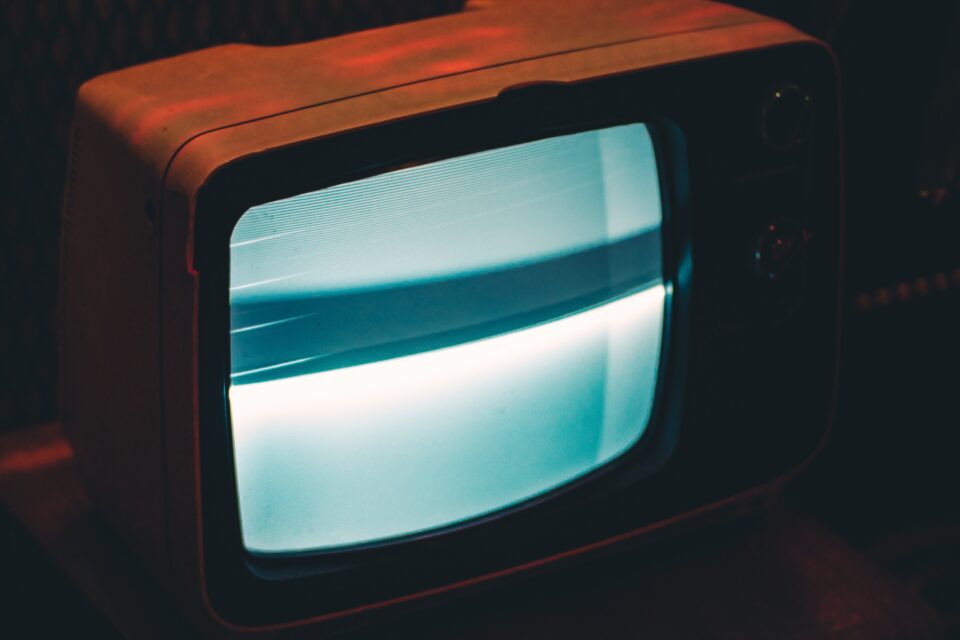There is something unique about the first moments in a TV show or limited series. Because TV offers so room to tell a story, its opening serves as an introduction to both the episode and the series. That in mind, I felt like these examples needed a separate list for this week’s highlights. My previous post on film openings is here.
Umbrella Academy (2019-)
There are two opening scenes in the first episode of Umbrella Academy: the unexpected birth scene and the violin montage. I think both moments serve as introductions, first to the world of the show, and then to the characters.
The birth scene is certainly one of the show’s most bizarre moments. We watch as a young girl jumps into a pool, and emerges pregnant and ready to give birth. The moment is absolutely shocking, and for a second feels like a very intense PSA about how flirting leads to immediate pregnancy. Prior to this, the viewer might have assumed that the narrative had something to do with the Soviet backdrop, or perhaps the relationship between the young girl and the boy she is flirting with. Neither of these are true, at least so far in the series, as the show quickly subverts our expectations of the narrative. It also introduces the idea that nothing is certain in this story. Time, people, life itself. These are all just variables which the show plays with.
The second introduction centers on what happened to the children in the Umbrella Academy. It also parallels the events in the birth scene, but instead of becoming suddenly pregnant, the infants are now suddenly adults. We have jumped from pregnancy to infancy and finally to adulthood in a matter of seconds.
The music in this scene also gestures to the show’s larger thematic discussion on masks and identity. By referencing The Phantom of the Opera, this opening suggests that there is a parallel between the Phantom and the children. Like the Phantom, these children grew up wearing masks, and now have to deal with the consequences of that trauma.
Gravity Falls (2012-2016)
This is one of the few cartoon theme songs which I do not skip. It is very catchy and really captures the tone of the show, particularly how it balances humor with mystery and occasionally horror. Although these characters are surrounded by supernatural mystery, there is a lot of misdirection in the show. The opening credits is a good example, as we see Dipper and his family studying a small footprint while totally ignoring the massive footprint which they are standing in. This moment establishes how often the characters are unconsciously working within a big mystery through a series of smaller ones. It is only when the characters take a step back to assess the show’s various tangents that they put this together.
Another thing to note is how important this title montage was for fans during the show’s run. Gravity Falls encouraged their fans to participate with the show’s mystery by solving codes left at the end of the intro. There has been a lot of discussion online about these clues and how to decipher them. I recommend the video done by Mother’s Basement (interesting channel name) on YouTube for those interested in all the references and clues throughout this sequence.
Series of Unfortunate Events (2017-2019 and 2004)
I could not decide between the two different versions of this famous book series. While I prefer the 2017-2019 Netflix version of the story, both it and the 2004 film have amazing title sequences.
The film’s sequence captures the art style of the original books. It also plays with the idea that the Baudelaire children are caught in a two-dimensional paper world, where adults are often illogical and ignorant. We watch the Baudelaire’s try to escape Olaf again and again, suggesting they no matter how they escape, Olaf will always find them. This situates a major difference between the film and show, as the film is more interested in capturing the tone of the first three books. As such, the film creates this chain of cause and effect but with no solution. The Baudelaire’s never really escape and are always caught in this cycle.
This contrasts the show’s title sequence, which focuses on the investigative aspect of the series. Here, all the pieces come together to create a unified mystery, versus an uncompleted kind. The show also focuses on summarizing what is to come and what villainy the children will encounter, while the film focuses mainly on the theme of escaping. Both versions are compelling but interested in dissimilar things.
American Horror Story (2011-)
For those familiar with the show, American Horror Story features a different title sequence for each season. They are disturbing in fun new ways, as each sets up the tone and environment of the season. One which stands apart for me is the sequence for season 5: Hotel. This version really plays with the bizarre conditions of a hotel. It is neither home nor outside, but somewhere in between domestic and public. Hotel rooms are inherently strange because you don’t know the history of the room. You don’t know who stayed there, who has a key, or what might be hidden in the surrounding rooms. In other words, it is a temporary place where you behave as you do at home, but in a new landscape surrounded by strangers. It is thus a strange extension of the home, a sort of binary environment stuck between familiar and unknown.
The title sequence gestures to this by focusing on what happens just outside your door. We see increasingly frightening and violent figures through a peephole, which implies that the Hotel conceals dangerous people and spaces, and that there is not much separating the viewer from these threats. Both the viewer and threat occupy the same uncertain space with only a door separating the two. This again poses the question, who else has a key?
